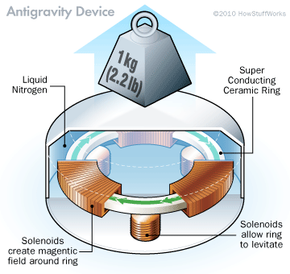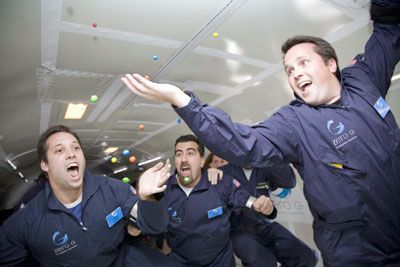From the hoverboards of "Back to the Future" to the gravity guns of "Half-Life 2," science fiction is peppered with antigravity technology. In the real world of peer-reviewed studies, corporate-funded labs and general relativity, however, "antigravity" is a dirty word.
Gravity, you undoubtedly remember, is the attractive force between objects. It holds you to the planet and keeps the planet orbiting around the sun. As you might imagine, the idea of reducing, canceling or protecting against this effect of gravity is highly appealing.
Advertisement
Antigravity technology would revolutionize space exploration and energy production. It would slash the energy demands of travel and transportation. First, however, we'd just have to drastically alter our understanding of physics and figure out how to counter this powerful force.
As such, antigravity technology remains both the Holy Grail and a red flag. There's been no shortage of hoaxes, conspiracy theories and credibility-straining reports regarding its research.
For example, in 1992, Russian physicist Evgeny Podkletnov claimed to have successfully tested a device that shields an object from gravity. The experiment involved levitating a superconducting disc above a magnet. No one -- including NASA researchers -- has been able to replicate this experiment in the nearly two decades since that time. In 2002, noted aviation journalist Nick Cook's research into supposed Nazi antigravity research failed to win over critics.
You might be starting to see why "antigravity" is a taboo subject. Or why NASA has chosen previously to research antigravity through projects with names like Breakthrough Propulsion Physics Project (1996-2002). NASA even published a booklet titled "Responding to Mechanical Antigravity" to help amateur and professional researchers, most of whom submitted ideas (as many as 100 per year) involving machines that falsely appeared to create an antigravity effect.
And just in case you're wondering, NASA's zero-gravity flights aboard modified C-9 aircraft are not examples of antigravity. Neither is the levitation effect achieved in 2007 by countering Casimir force, a quantum force that essentially causes objects to stick to one another -- a type of nanofriction [source: ScienceDaily]. Antigravity, on the other hand, involves lessening the effects of gravitational pull on an object, and the science just isn't there yet.
Many scientists strongly believe that antigravity isn't possible, given what we know about the universe and the laws that govern it. So for now, all those amazing antigravity gizmos are going to have to remain within the realm of science fiction.
Explore the links on the next page to learn even more about gravity.
Advertisement


